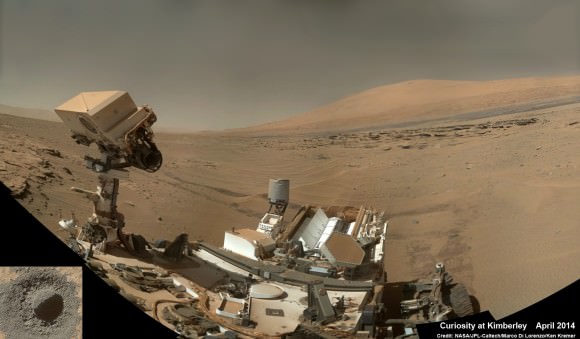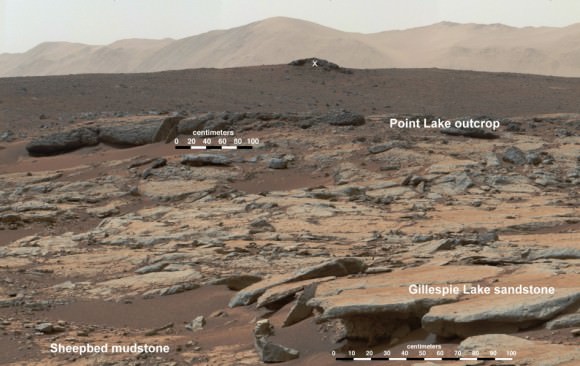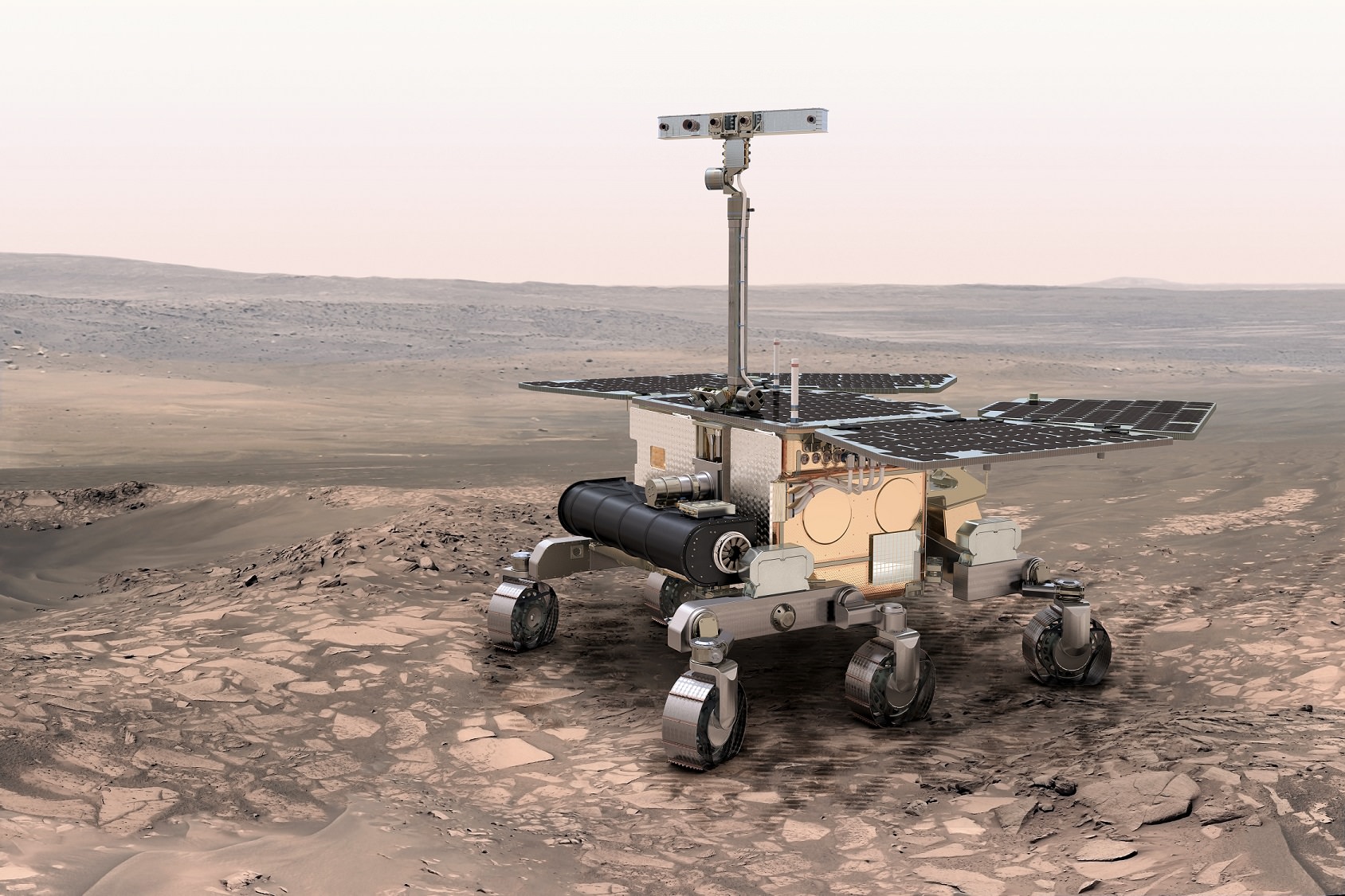Picking a landing site on Mars is a complex process. There’s the need to balance scientific return with the capabilities of whatever vehicle you’re sending out there. And given each mission costs millions (sometimes billions) of dollars — and you only get one shot at landing — you can bet mission planners are extra-cautious about choosing the right location.
A recent paper in Eos details just how difficult it is to choose where to put down a rover, with reference to the upcoming European ExoMars mission that will launch in 2018.
In March, scientists came together to select the first candidate landing sites and came up with four finalist locations. The goal of ExoMars is to look for evidence of life (whether past or present) and one of its defining features is a 2-meter (6.6-foot) drill that will be able to bore below the surface, something that the NASA Curiosity rover does not possess.
“Among the highest-priority sites are those with subaqueous sediments or hydrothermal deposits,” reads the paper, which was written by Bradley Thomson and Farouk El-Baz (both of Boston University). Of note, El-Baz was heavily involved in landing site selection for the Apollo missions.

“For example,” the paper continues, “some of the clearest morphological indicators of past aqueous activity are channel deposits indicative of past fluvial activity or the terminal fan, or delta deposits present within basins.”
But no landing site selection is perfect. The scientists note that Curiosity, for all of its successes, seems unlikely to achieve its primary science objectives in its two-year mission because the commissioning phase took a while, and the rover moves relatively slowly.
That said, NASA has argued that the rover achieved its goal of finding past habitable environments already, with discoveries such as extensive evidence of a past potentially life-bearing lake now called Yellowknife Bay.

What could change the area of the landing could be using different types of entry, descent and landing technologies, the authors add. If the parachute opened depending on how far the spacecraft was from the ground — instead of how fast it was going — this could make the landing ellipse smaller.
This could place the rover “closer to targets of interest that are too rough for a direct landing and reducing necessary traverse distances,” the paper says.
You can read the paper in its entirety at this link, which also goes over the history of selecting landing sites for the Apollo missions as well as the Mars Exploration Rovers (Spirit and Opportunity).


ESA will test its EDL technology in a mission slated for 2016. The Trace Gas Orbiter will conduct science operations and establish the communications with Earth needed for the exo-mars 2018 mission. In addition, it will carry an entry, descent and landing demonstrator module named “Schiaparelli”.
Schiaparelli will prove key ESA technologies for a controlled landing on Mars, entering the atmosphere at 21 000 km/h and use parachutes and thrusters to brake to less than 15 km/h before landing less than eight minutes later.
This experimental EDL module will collect data on the martian atmosphere during the entry and descent, and its instruments will perform environmental measurements at a landing site on the plains of Meridiani Planum.
It therefore seems somewhat premature to be considering the options for a landing site for the 2018 mission when so much depends on the performance of Schiaparelli in 2016. I’m perplexed as to why the paper by Thomson and El-Baz makes no mention of the details I’ve outlined.
ref: http://www.esa.int/Our_Activities/Space_Science/ExoMars_lander_module_named_Schiaparelli
I can’t comment on why no mention of those important aspects was made in the paper, but given that the landing sites are all relatively equatorial (and I assume similar in altitude) the landing process should not be radically different. The same hardware will be capable of landing at any of these sites, with Schiaparelli providing some important ‘fine-tuning’ data.
Another reason to choose a site well in advance is that the orbiters that are already at Mars can be used to take detailed photographs to determine landing ellipses at the various sites. Unfortunately, these orbiters cannot be guaranteed to be in service in 2016+.
Source: I followed the landing site selection process for Curiosity very closely
Personally, I’m a big fan of Mawrth because if I understand correctly, it may have old rocks from the warm, wet period on Mars that were protected from heavy bombardment of asteroids later on
Hellas.
Hellas, unless we know of a caldera venting water vapor and/or methane (though, I suppose, if we knew that, there would be headlines).
Hellas Planetia is hands down the best place to look for life on Mars from the distant past OR in the present. Un-for-tuna-nettly, it is NOT located near the Martian Equator and would require a trick orbital insertion to make landing there possible.
In a perfect world, we’d have a dozen ‘Curiosity’ style rovers poking around in that huge basin!